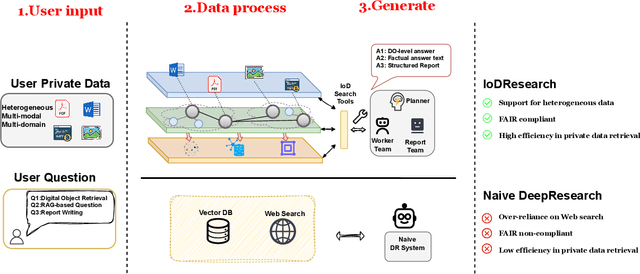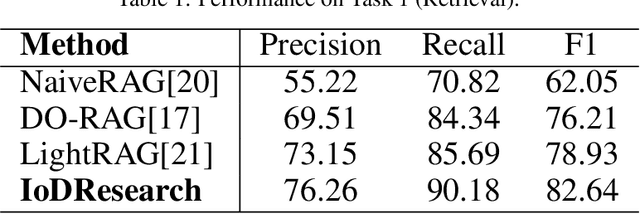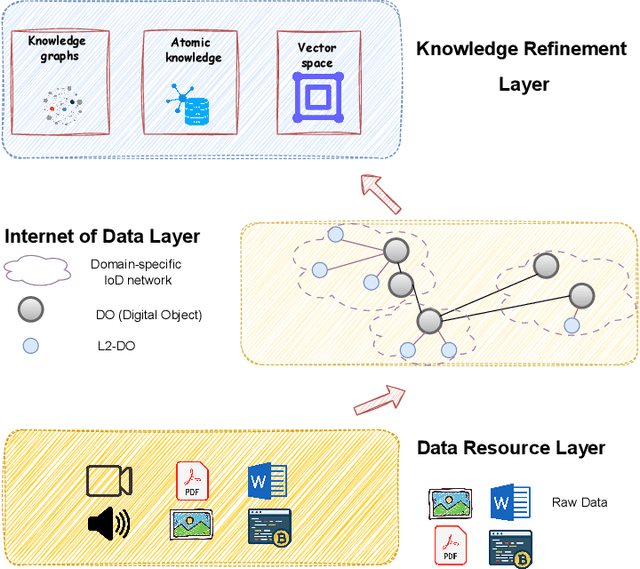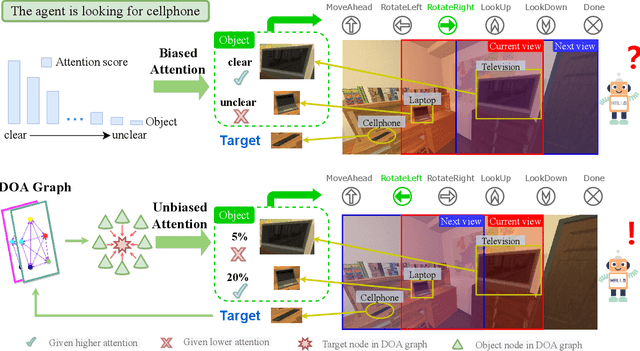Zhuofan Shi
IoDResearch: Deep Research on Private Heterogeneous Data via the Internet of Data
Oct 02, 2025



Abstract:The rapid growth of multi-source, heterogeneous, and multimodal scientific data has increasingly exposed the limitations of traditional data management. Most existing DeepResearch (DR) efforts focus primarily on web search while overlooking local private data. Consequently, these frameworks exhibit low retrieval efficiency for private data and fail to comply with the FAIR principles, ultimately resulting in inefficiency and limited reusability. To this end, we propose IoDResearch (Internet of Data Research), a private data-centric Deep Research framework that operationalizes the Internet of Data paradigm. IoDResearch encapsulates heterogeneous resources as FAIR-compliant digital objects, and further refines them into atomic knowledge units and knowledge graphs, forming a heterogeneous graph index for multi-granularity retrieval. On top of this representation, a multi-agent system supports both reliable question answering and structured scientific report generation. Furthermore, we establish the IoD DeepResearch Benchmark to systematically evaluate both data representation and Deep Research capabilities in IoD scenarios. Experimental results on retrieval, QA, and report-writing tasks show that IoDResearch consistently surpasses representative RAG and Deep Research baselines. Overall, IoDResearch demonstrates the feasibility of private-data-centric Deep Research under the IoD paradigm, paving the way toward more trustworthy, reusable, and automated scientific discovery.
Unbiased Directed Object Attention Graph for Object Navigation
Apr 09, 2022



Abstract:Object navigation tasks require agents to locate specific objects in unknown environments based on visual information. Previously, graph convolutions were used to implicitly explore the relationships between objects. However, due to differences in visibility among objects, it is easy to generate biases in object attention. Thus, in this paper, we propose a directed object attention (DOA) graph to guide the agent in explicitly learning the attention relationships between objects, thereby reducing the object attention bias. In particular, we use the DOA graph to perform unbiased adaptive object attention (UAOA) on the object features and unbiased adaptive image attention (UAIA) on the raw images, respectively. To distinguish features in different branches, a concise adaptive branch energy distribution (ABED) method is proposed. We assess our methods on the AI2-Thor dataset. Compared with the state-of-the-art (SOTA) method, our method reports 7.4%, 8.1% and 17.6% increase in success rate (SR), success weighted by path length (SPL) and success weighted by action efficiency (SAE), respectively.
 Add to Chrome
Add to Chrome Add to Firefox
Add to Firefox Add to Edge
Add to Edge